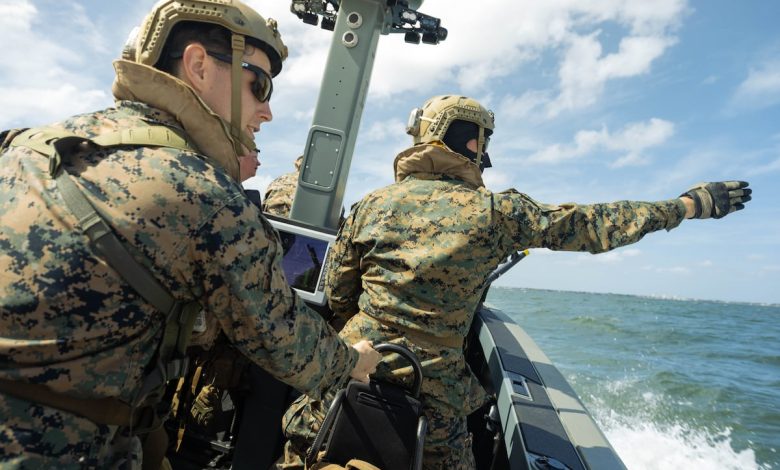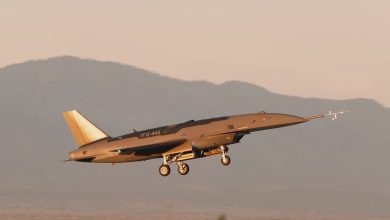Marine Corps greenlights boat-based recon companies, narco-subs

The Marine Corps is dialing back its vision for shallow-water littoral regiments, but greenlighting a new unit with special high-speed boats as it continues to develop a Pacific-focused future force.
That’s according to an update to the Corps’ Force Design 2030, published earlier in October. The 24-page document — the first Force Design update in two years — cites a “continuous Campaign of Learning” that’s helping the service make fielding decisions faster and alter course as needed.
“We are modernizing at a time when the character of war is shifting rapidly,” Commandant Gen. Eric Smith wrote in a preface to the document. “Adversaries are fielding advanced weapons and employing new methods designed to erode our warfighting advantages. Drones, long-range precision fires, cyber effects and electronic warfare are now daily features of conflict. The lessons drawn from contemporary battlefields underscore what Marines have long understood: combat is unforgiving, and victory belongs to the side that adapts faster, fights harder and endures longer.”
While the update hails the Corps’ establishment of two Marine Littoral Regiments in the Pacific-based III Marine Expeditionary Force, with the second, 12th MLR, set to achieve readiness for war next year, it also backtracks on plans to convert 4th Marine Regiment, based in Japan, to a third MLR based in Guam.
The regiment “will be retained in III MEF as a reinforced Marine Infantry Regiment, preserving its core mission while preparing to respond to potential crisis and conflict,” the document states. “We determined through the Campaign of Learning that two MLRs and one reinforced Marine Infantry Regiment in III MEF is the optimal force composition to meet III MEF’s missions and objectives.”
A Marine Corps spokesman, Lt. Col. Eric Flanagan, told Marine Corps Times that this shift was driven by threat assessments.
“This decision to retain 4th Marine Regiment is informed by recent wargames and analysis which address the growing threat posed by competitors in the Indo-Pacific and, together with other forces in the region, postures the Marine Corps to decisively respond to regional threats, provide integrated deterrence alongside allies and partners, and address emergent crises,” he said.
“Our current priorities are focused on ensuring that our existing infantry regiments and purpose-built MLRs are equipped and trained to meet the demands of the evolving security environment,” Flanagan added.
The two MLRs nonetheless remain central to the Corps’ fielding plan for NMESIS, the service’s ground-based anti-ship missile system, and MADIS, its vehicle-based counter-drone system. Official fielding of the first 10 Light Marine Air Defense Integrated Systems, mounted on the service’s ultra-light Polaris MRZR ATVs, is set to begin next year.
“We are developing a new Maritime Reconnaissance Company unit as part of the broader evolution of our light armored reconnaissance battalions into mobile reconnaissance battalions,” the force design update states. “The MRC will operate a new tactical boat, the MMRC, which can partner with unmanned surface vessels to maneuver sensors and personnel in support of Marine forces operating in the littorals.”
As recently as this spring, Marine Corps leaders were still deciding about a concept that would create one of these MRCs for each of the Corps’ three infantry divisions. Marine Corps Times reported at the time that they could each maintain as many as 18 multi-mission reconnaissance watercraft “and an undisclosed number of unmanned vessels” and could conduct missions not only in the shallows, but also in the open ocean.
Officials could not immediately provide additional information about how and when the MRCs would be fielded, but ongoing experimentation has provided a look at the tactical boats they’ll be operating.
The Australian-made MMRCs have been sent to units like 4th Assault Amphibian Battalion and 1st Light Armored Reconnaissance Company for evaluation. The craft have a range of 250 nautical miles and have been hailed for their value as insert/extract and maneuver vehicles as well as reconnaissance platforms.
Also transitioning from the lab to the fleet is a narco sub-style autonomous semi-submersible — the autonomous low-profile vessel — that the 12th MLR has been testing out for logistics and supply missions.
In a round-table with reporters earlier this year, 12th MLR Commanding Officer Lt. Col. Peter Eltringham called the subs “a fantastic piece of gear.”
He said he wanted to make small dispersed teams within the regiment “hard to find” and hailed the value of the logistics subs to supply these units undetected.
The Force Design update said the ALPVs were “transitioning to a program of record,” but did not say when that transition would take place or which units would get the new narco-subs.
Read the full article here









